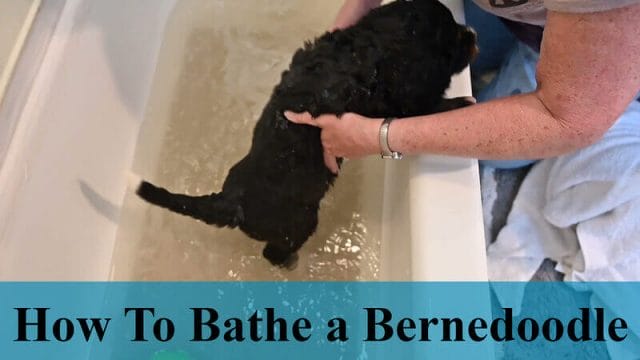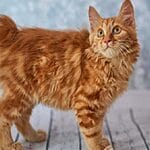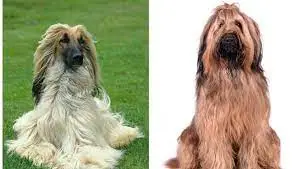Designer Dog Breeds

Designer Dog Breeds have always had different social statuses in canine society. The “blue bloods,” or pedigree dogs, were seen as upper crust, whilst mixed-breed, mutt, and mongrel dogs were regarded as common. Similar to human hierarchy, the canine class structure has changed over time. A noble pure-bred pet is no longer always more sought-after, prestigious, or expensive because of its birthright.
What is a mixed breed?
As the name suggests, a mixed breed dog has ancestors from multiple breeds. The majority of mixed-breed dogs lack parental information. In other words, it is impossible to determine their ancestors or the number of various breeds that contributed to their genetic makeup. A mutt is made up of a variety of genetic traits and may exhibit any attributes that his forebears have.
There is limitless room for variation in traits including look, conformation, and temperament. A recognized pure breed, in particular, has a clear history derived from selective breeding to create canines with more consistent features. Breed integrity is preserved through breed standards that address physical traits and are certified with an official kennel club.

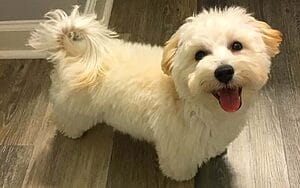
What is a designer breed?
The best of both worlds are combined in designer breeds. Designer breeds are created by intentionally “mixing” registered, pure canine breeds. The best traits of each parent are optimized when breeds are purposefully mixed. Although the dog occasionally has more than two pure breeds in his genes, unlike a mutt, his ancestry may be traced.
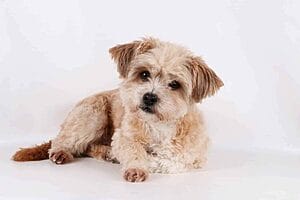

“The offspring produced by mixing two bloodlines within a species… should be more accurately referred to as crossbreeds.”
Hybrids are a broad phrase used to describe designer breeds, although this is incorrect. When two separate species breed, true hybrids are produced. It is more appropriate to use the term “crossbreeds” to describe the offspring created by blending two bloodlines from the same species (in this case, the canine).
In essence, a crossbreed or designer dog has distinguishable parents who are members of two recognized breeds, as opposed to a mixed breed dog or mutt, which is one of unrecorded parentage.
‘It takes three generations of documented breeding to be considered a ‘breed’.”
An existing kennel club must analyze the breed’s verifiable history all the way down to the original parents before recognizing a designer breed as a “new” breed. The new breed may be designated and registered as such if the kennel club is pleased with the breed’s background and lineage. The designer breed gains more respect because to this registration.
How are designer breeds “designed”?
The first generation of mixed puppies from a Standard Poodle and Golden Retriever cross does not constitute a new breed that has been officially recognized. Breeding must be done with care and purpose to create new breeds. The “Goldendoodle” is a new breed of dog that took some time to develop.
Here is a brief review of genetics that uses the Goldendoodle as an illustration. An F1-cross is the name given to the first generation of mixed puppies, who are a 50/50 mix of Standard Poodle and Golden Retriever. An F2-cross occurs when two crossbreds are bred. F3-cross is the term used to describe the offspring of two F2 dogs. “Multi-generational” crosses are the name given to F3 crosses.
The term “breed” (in this example, “Goldendoodle”) as opposed to “crossbreed” (of Standard Poodle and Golden Retriever) requires three generations of proven breeding. The registered name, Goldendoodle, must therefore be obtained through time.
What are some pros and cons of designer dog breeds?
Designer breeds have both advantages and disadvantages.
Pros:
- Breeding with care can result in offspring with the best traits from both parents. It is a nice attribute that Standard Poodles do not shed much. Other excellent characteristics of golden retrievers include their calm demeanor and physical stamina. When you combine the two, you get an extremely appealing pup.
- Crossbreeding frequently improves genetics since the offspring may have more heart or hybrid vigor. Crossbreeding can help prevent some undesirable recessive characteristics by bolstering the gene pool, but inbreeding often amplifies weaker features. In other words, when breeds are mixed, recessive genes could not be expressed as frequently. For instance, a Labradoodle, a cross between a Standard Poodle and a Labrador Retriever, might not exhibit hip dysplasia to the same extent as many pure Labrador lineages.
- Although the outcomes of designer breeding may not be as predictable as anticipated, they are still more predictable than the traits of random mixed breeding. Gene pools can be unpredictable.
Cons:
- The findings from the cross-breeding might not be as reliable as those from the mating of pure breeds. Many would-be pet owners look for canines who don’t shed a much. When a Standard Poodle and a Golden Retriever are crossed, the daily vacuum may still be necessary if the pups have coats that mostly represent their Golden Retriever lineage.
- Even though they are lessened, recessive traits are still conceivable in cross breeds, especially in the F2 or F3 generations. Therefore, Labradoodle puppies could still have weak hips.
What are some commonly recognized designer dog breeds?
- Cockapoo: Poodle and Cocker Spaniel (often not Standard) were crossed to create this breed. This breed has a long history and is regarded as one of the first designer breeds.
- Malti-poo: This hybrid is a Maltese and a Poodle (again, smaller variety of Poodle).
- Peke-a-poo: Another Pekingese and tiny Poodle combination that is a success results in puppies with larger noses and less respiratory issues.
- Labradoodle: A smart, active, and bigger dog results from the cross of the Standard Poodle and Labrador.
- Goldendoodle: This Golden Retriever and Poodle cross produces amiable, devoted dogs.
- Goldador: Combine a Golden Retriever and a Labrador for an active, devoted pet that sheds.
- Maltese-shih tzu: One of the few designer dogs without adorable parents or a poodle moniker is this one.
- Puggle: Beagle and Pug parents give birth to adorable, lovable, and reasonably sized puppies who don’t suffer from as many respiratory problems as purebred Pugs.
- Schnoodle:This Miniature Poodle/Miniature Schnauzer mix is playful but also enjoys cuddling.
- Yorkipoo: A small dog with a strong personality can be produced by breeding a miniature poodle with a Yorkshire terrier.
Related Articles
As you can see, there are several possible crossbreed dog combinations. So, don’t let canine blue bloods frighten you. Crossbreeding and mixed breeds can result in lovely dogs with desired characteristics that make fantastic family pets.
Creator: PetsCareTip




